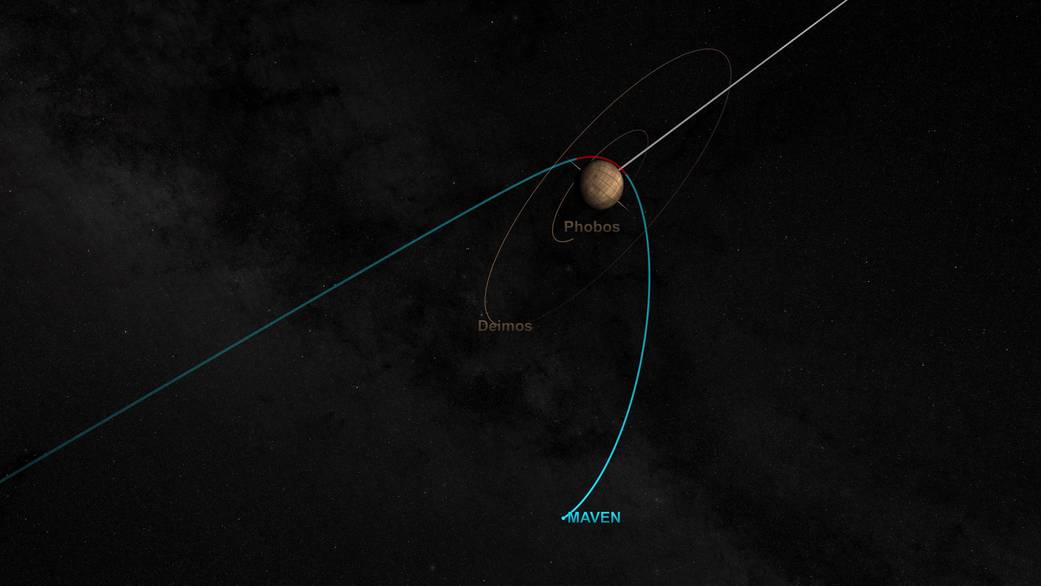This image shows an artist concept of NASA’s Mars Atmosphere and Volatile EvolutioN (MAVEN) mission as it enters orbit around the Red Planet. MAVEN is part of NASA’s Mars Scout program, funded by NASA Headquarters and managed by NASA’s Goddard Space Flight Center in Greenbelt, Maryland. Launched in November 2013, the mission will explore the Red Planet’s upper atmosphere, ionosphere and interactions with the sun and solar wind.
MAVEN’s journey to Mars requires a 33-minute engine burn to slow the spacecraft so that it can be captured into Martian orbit. MAVEN’s trajectory is depicted by the blue line, showing its initial approach and the beginning of the 35-hour capture orbit. The red portion of the line indicates the engine burn, which starts near the Martian north pole. Mars’s orbit around the sun is depicted by the white line to the right of the planet. The orbits of the two Martian moons, Phobos and Deimos, are also shown.
Scientists will use MAVEN data to determine the role that loss of volatiles from the Mars atmosphere to space has played through time, giving insight into the history of Mars’ atmosphere and climate, liquid water, and planetary habitability.
Credit: NASA’s Goddard Space Flight Center

























